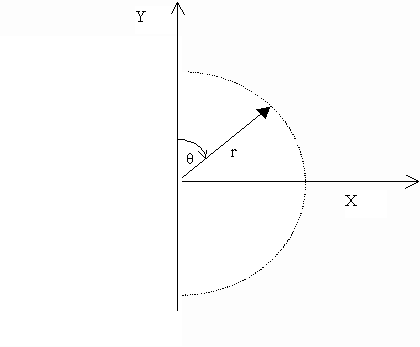
The GENTRA Glossary contains a summary of the main terms used in Gentra and its documentation. It is also available interactively through the GENTRA Input Menu (See Section 2.5).
GENIUS
GENIUS (GENtra Interface for User Sequences) is a user-accessible FORTRAN-module where GENTRA users can insert their own coding sequences to replace and supplement the built-in physical laws, numerical devices and output options.
GENTRA
Particle-tracking software for the PHOENICS flow-simulation package. GENTRA consists of:-
GENTRA CARTESIAN SYSTEM
GENTRA uses, for the integration of the particle equations, a Cartesian co-ordinate system. This system is related to the PHOENICS grid system as follows:-

The Z axes of the two systems coincide, forming a right-handed grid in each case.
The relationships connecting the two co-ordinate systems are:
Xc = R + r cos (Xp) Yc = R + r sin (Xp)
Uc = Vp cos (Xp) - Up sin (Xp) Vc = Up cos (Xp) + Vp sin (Xp)
where R = YVLAST.
OBSTACLES
(See WALLS)
PARCEL
The term PARCEL is used to refer to a group of particles that are injected at the same time, at the same position and with the same properties. The parcel is characterised by a MASS FLOW-RATE (kg/s), which specifies (together with the particle size, density and velocity) the number of particles in the parcel.
WALLS (AND OBSTACLES)
Walls and obstacles are defined in GENTRA (as in the rest of PHOENICS) through face and cell porosities (see the CONPOR command in the PHOENICS Reference Manual). The level of porosity that will be considered by GENTRA to be an obstruction for the particles can be set by the user; see the option POROSITY THRESHOLD in the BOUNDARY CONDITIONS panel.